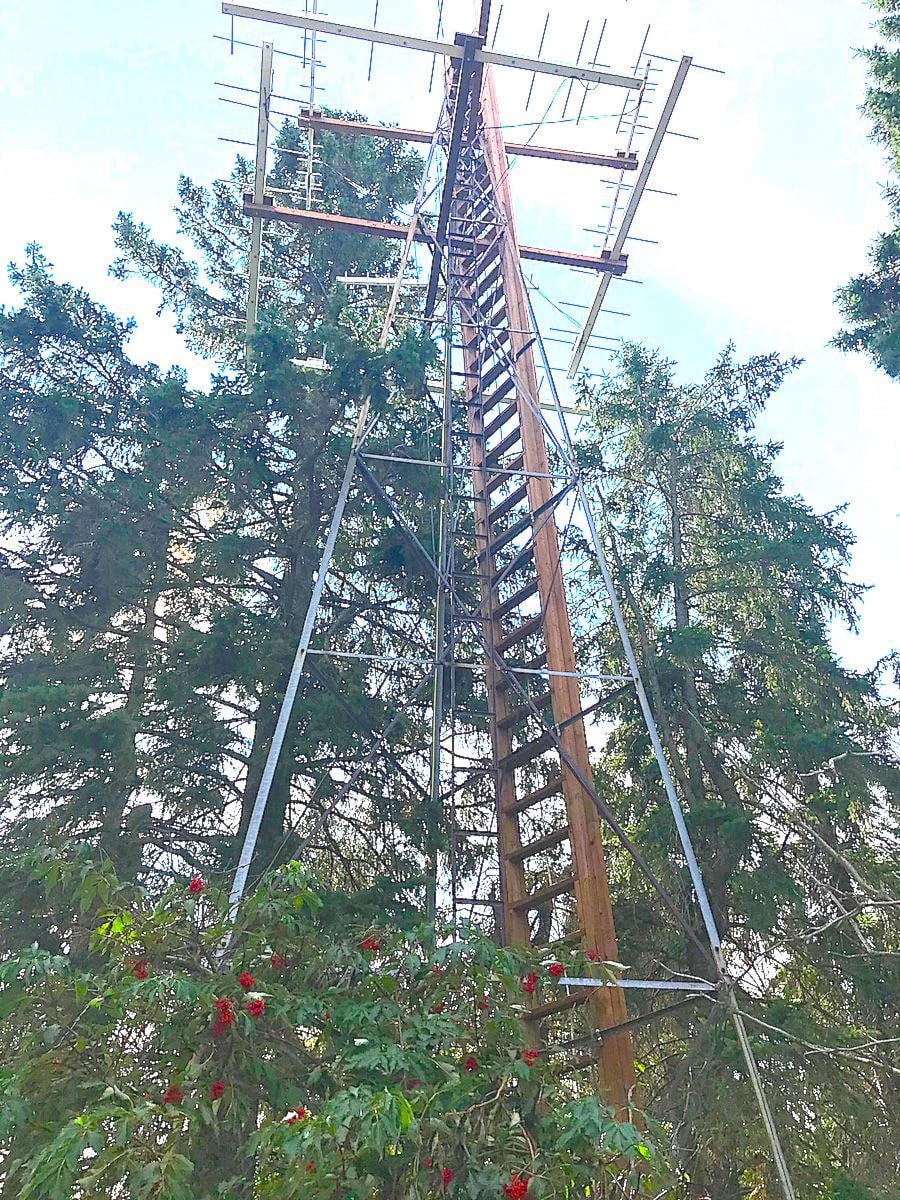An old windmill at the Ellis Bird Farm has been transformed into the first monitoring tower for bird migrations in Alberta.
Starting this fall, scientists will be tracking which species are flying through this area, and whether they are arriving later or earlier than usual, said Myrna Pearman, the recently retired site manager and biologist.
Altered bird migrations are one indicator of climate change, she said — so $71,400 for the Motus Network tower was obtained from a program promoting climate literacy under Alberta’s former New Democrat government.
Work started this summer on converting an old wooden windmill, erected by the late siblings Charlie and Winnie Ellis (the bird farm’s original owners), into a hi-tech monitoring station with a radio receiver.
Pearman thinks the project is a nice tie in with the farm’s history, as well as a good way of lowering cost.
The Motus Wildlife Tracking System is part of a Bird Studies Canada program in partnership with Acadia University and other organizations. It uses radio signals to study movements of birds and small wildlife.
The technology detects for 15 kilometres in each direction migrating birds that carry a nano tag “backpack.”
While bird banding isn’t done at the Ellis Bird Farm, located northeast of Red Deer, Pearman said many researchers throughout North America have spent years banding and tracking migrating birds that fly through this region.
She’s excited that a couple of species have already been detected by the bird farm tower — including a dark-eyed junco.
Signals from banded shorebirds such as plover and killdeer, as well as waterfowl and raptors, are the most likely to be picked up, as these birds migrate from northern Alberta to the southern U.S. and Mexico.
“We’re all interconnected with climate change,” added Pearman. She noted Alberta bluebirds have been among the thousands of winged creatures found dead this month along the southern Rockies in New Mexico, Arizona and Texas.
While no conclusive cause of the mass deaths has been determined, biologists suspect drifting smoke from the unprecedented California wildfires resulted in toxic poisoning.
Some insectivores flying through the thick smoke were also found starving, presumably because they can’t find enough flying insects to eat.
Pearman hopes the first Motus Network tower in the province will help scientists determine what’s happening with climate change and, hopefully, how to start mitigating it.
“The health of the Earth is central to human civilization,” she said. “We need to care because there is no Planet B.”
More information is available from motus.org.
